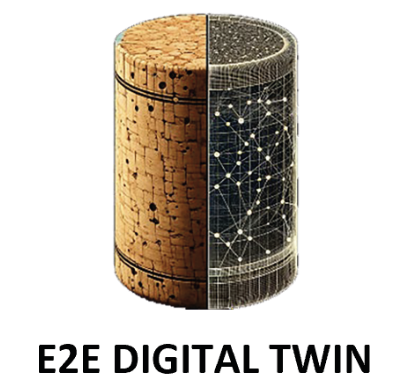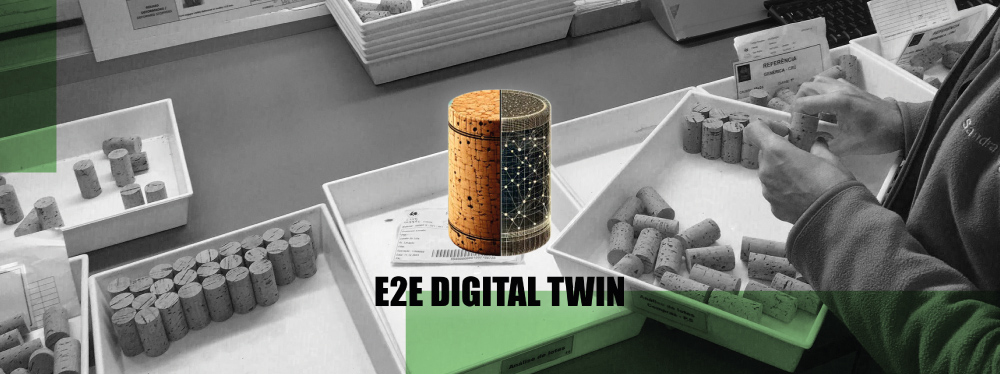E2E Digital Twin
E2E Digital Twin
Challenge
The manufacture of top-of-the-range natural cork stoppers is highly dependent on visual inspections carried out by specialised workers to assess the quality of the stoppers throughout the various stages of the production process. This assessment has an impact not only on the company's profits, but also on customer satisfaction. If quality stoppers are classified as defective, they are not sold. On the other hand, if defective stoppers are not detected, they will be sold, affecting customer confidence. The value of the final product is therefore extremely dependent on the accuracy and agility of this process.
Solution
The E2E DIGITAL TWIN project aims to disrupt the current process of inspecting and classifying natural cork stoppers by combining the digital with the real:
- The creation of a ‘digital twin’ of each high-end natural cork stopper that is produced, and of the inspection, quality control and assembly processes to which they are subjected;
- The use of Computer Learning to analyse and classify stoppers and sets of stoppers, in order to reduce the area of overlap between adjacent classifications, higher (fewer imperfections) and lower (more imperfections);
- The use of Augmented Reality devices to unite the tacit knowledge of workers on the production line with the information generated by mathematical models in the digital process, in order to guarantee ‘artisanal’ and humanly meticulous quality control, which is strategic for positioning the CorkSupply brand with greater agility and confidence.
- The development of technological strategies that make it possible to characterise and understand the inspection processes carried out by more experienced workers, and to use this knowledge in interactive multimedia applications for training new workers, in order to streamline training processes and engage new generations.
Objectives, Activities and Results expected / achieved
The expected objectives of this project are:
O1: Development of the DT of cork stoppers, visual quality control processes and the creation of blends;
O2: Development of Computational Learning (CA) models for categorising the visual quality of stoppers and blends;
O3: Digitisation and high-precision three-dimensional reconstruction of all the standard reference stoppers used in the different quality assessment and control tasks;
O4: Development of knowledge transfer tools based on AR technology.

Project Reference
COMPETE2030-FEDER-00581600Funding

Total Investment
887.286,40IPN Investment
333.729,60Total Eligible
887.286,40IPN Eligible
333.729,60EC Funding – Total
654.300,16EC Funding – IPN
283.670,16Duration
36 MonthsStart Date
2024-01-01End Date
2026-12-31Approval Date
2024-07-30Consortium
Cork Supply Portugal, S.A.Instituto Pedro Nunes
Universidade de Coimbra
Keywords
Digital Twin;Computer Vision;
Artificial Inteligence;
Augmented Reality.










